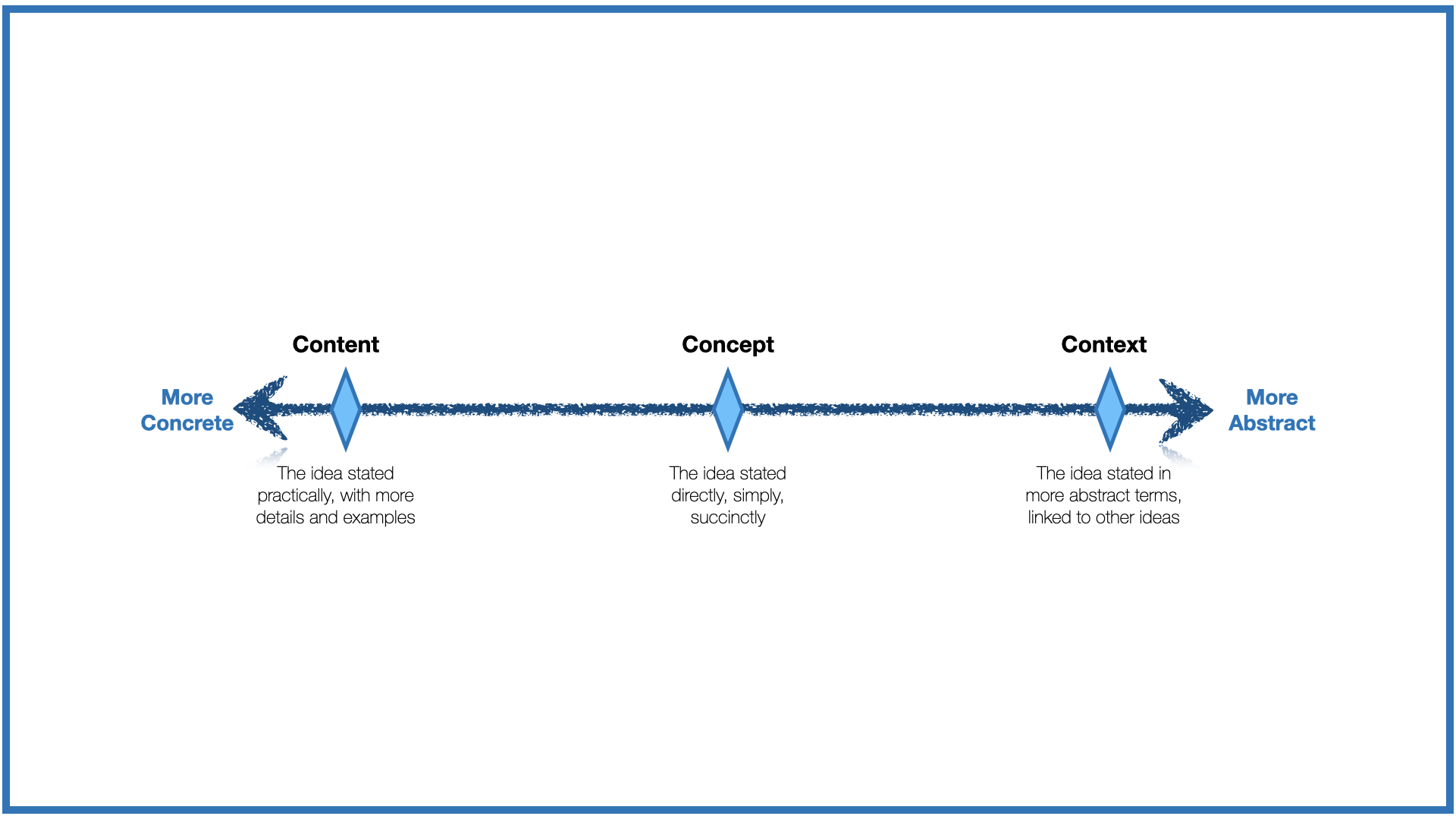Effective communicators help their audience understand their message better by communicating the idea in more than one way.
They share the idea succinctly and elegantly to capture attention and create awareness. They provide examples to make the idea more practical. And, they also help people see how the idea is related to other ideas they already know.
Communicating effectively requires you to take responsibility for being understood. I have previously written about how effective communicators collaborate with their audience to ensure their message is better understood.
In this post, I'd like to focus on how to craft your message in a way that increases the likelihood of people understanding it. This is based on a framework developed by Matt Church, a charismatic speaker, best-selling author, mentor, and one of the most impactful communicators I've ever met.
Any idea can be communicated at 3 levels. You can simply share the idea - stating it as simply and elegantly as you can and hope people get the meaning you intended. In Matt's framework, this is communicating at the level of Concept.

Ideas can be communicated at 3 levels - directly, in a more concrete way, and in a more abstract manner.
However, this is not the only level at which the idea can (or should) be communicated. You can help people understand your message better by making it more concrete as well as by making it more abstract! Matt Church calls these Content and Context.
Content is about expressing the idea in more practical or concrete terms. You can make your idea more concrete by offering examples, evidence, implementation steps (how-to's) and other ways that make the idea more tangible for the audience.
For example, if your Concept is: "Make it easier to build a habit by setting up reminders", examples of Content that supports this idea might include:
- Set up a daily alarm at a fixed time to go for a walk (Example)
- Steps to set-up automated email reminders to ensure you pay credit card dues on time (How-to)
- Example of how someone built a reading habit by scheduling a reading hour on their calendar (Case Study)
On the other hand, you could also express the idea in more abstract terms - linking it to other ideas or concepts or beliefs that people have. The advantage of doing this is people find it easier to make sense of new ideas, if they can connect it to something they already know.
One way of doing this is to share a model - which shows the relationship between your concept and other ideas that people are already aware of. Continuing with the example of using reminders to build a habit, you could use the habit loop - which shows the linkage between cues, behaviours and consequences, as a model to help people understand the concept. In this case, the reminder is the cue that triggers the desired behaviour.
Effective communicators don't stop at communicating their idea directly (Concept). They know when and how to zoom in and share details (Content), and when to zoom out and help the audience see the big-picture (Context). In doing this, they help more people understand their ideas more deeply.
